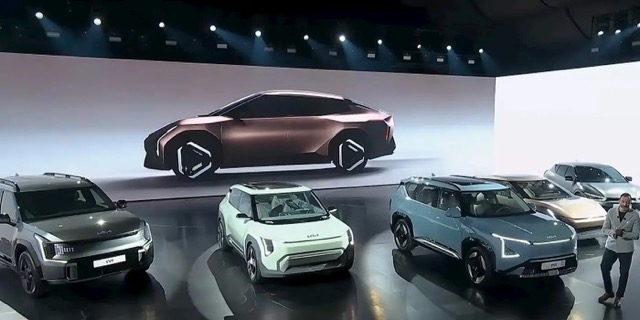Hyundai And KIA patents Active Air Skirt technology to improve EV

South Korean automakers hope the Active Air Skirt will better control turbulence that affects the handling and range of its electric vehicles. The system would allow 6 kilometers of electric range to be gained. The Active Air Skirt would also improve the driving of the Hyundai/Kia group’s EVs.
Automakers are investing heavily in the development of electric vehicles . Technologies are multiplying to make these vehicles more efficient and effective, and we have not finished discovering innovations linked to their advances. Now the two largest South Korean manufacturers, Hyundai and Kia , have just filed a patent application on a technology supposed to improve the autonomy and driving of its electric vehicles.
Active Air Skirt
This new technology, which is called Active Air Skirt, is in fact already known on the market. Its aim is to optimize the air flow which affects products from the manufacturers’ E-GMP platform . The structure, specific to EVs, has the characteristic of being equipped with a completely flat floor where the batteries are placed.

This feature pushed the group’s engineers to develop a pivoting skirt which is located between the front wheels and the bumper. This skirt works exactly like the air flow flaps we see on performance cars. Invisible during normal operation, the skirt will however activate at speeds above 80 kilometers/hour and will disengage again when the speed drops below 70 kilometers/hour.
According to Hyundai, which tested this technology on the Genesis GV60 , the Activ Air Skirt would reduce the drag coefficient by 0.008. This represents an improvement of 2.8%, which improves the range by approximately 6 kilometers. The Active Air Skirt also applies greater downforce to vehicles, which improves traction, reduces wind noise and increases stability at high speeds.

The Active Air Skirt can also operate at speeds above 200 kilometers per hour, at least according to the manufacturer. The latter has also made no secret of its intentions to graft its innovation to performance vehicles. Hyundai says its system will be durable and bold thanks to the use of a rubber material on the lower section of the part, which will improve longevity and reduce the risk of external objects damaging the parts at higher speeds.
Hyundai and Kia have filed patent applications in South Korea and the United States for now, but they are also expected to do so for electric vehicles sold here in Canada. Hyundai Motor Group plans to use the technology extensively, but has not yet mentioned when the group’s electric vehicles will benefit from it.


